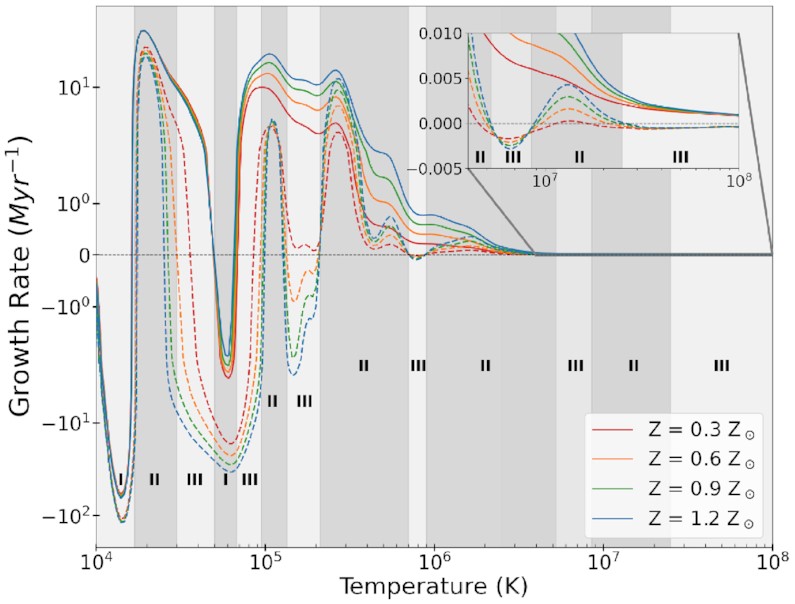Thermal Instability in 1D
This project was part of my Bachelors thesis at Indian Institute of Science, Bangalore, and was published on MNRAS (here).
Unfortunately, the figures are not available in dark-mode. So, apologies to dark-mode users. ☹️
Thermal instability has been long proposed as one of the sources for cold gas in different astrophysical media. There have been numerous studies on its evolution and behaviour, including effects of factors like magnetic fields, gravity, rotation, etc. Similarly, in this study we aimed to study the effects of metallicity variations on thermal instability, including the difference in non-linear evolution of thermal instability at different temperatures, in 1D.
We found that the growth rates of thermal instability does not explicitly depend on the metallicity. We compared the simulations with theoretical expectations from linear analysis and found a very good agreement in the limits where the theory holds.

What we did find, was the existence of different temperature regimes, where isobaric (small-scale) perturbations and isochoric (large-scale) perturbations had different behaviour at a given temperture. There were three regimes: * I : Both isobaric (small-scale) and isochoric (large-scale) perturbations are stable * II : Both isobaric (small-scale) and isochoric (large-scale) perturbations are unstable * III : Isobaric (small-scale) perturbations are unstable and isochoric (large-scale) ones are stable

Region I of course does not lead to anything, but interesting behaviour occurs in region II and III.
In region II, isochoric perturbations take the lead, and the overall evolution seems isochoric and large-scale in nature. In region III, isobaric perturbations take the lead, and the evolution of small-scale perturbations is dominant.
This gives rise to a two different kinds of behaviour in presence of both large-scale and small-scale perturbations, depending on the regime that the temperature falls in.
In region III, the behaviour is akin to the shattering of a large-scale perturbations, while in region II the large-scale perturbations contracts monolithically.
